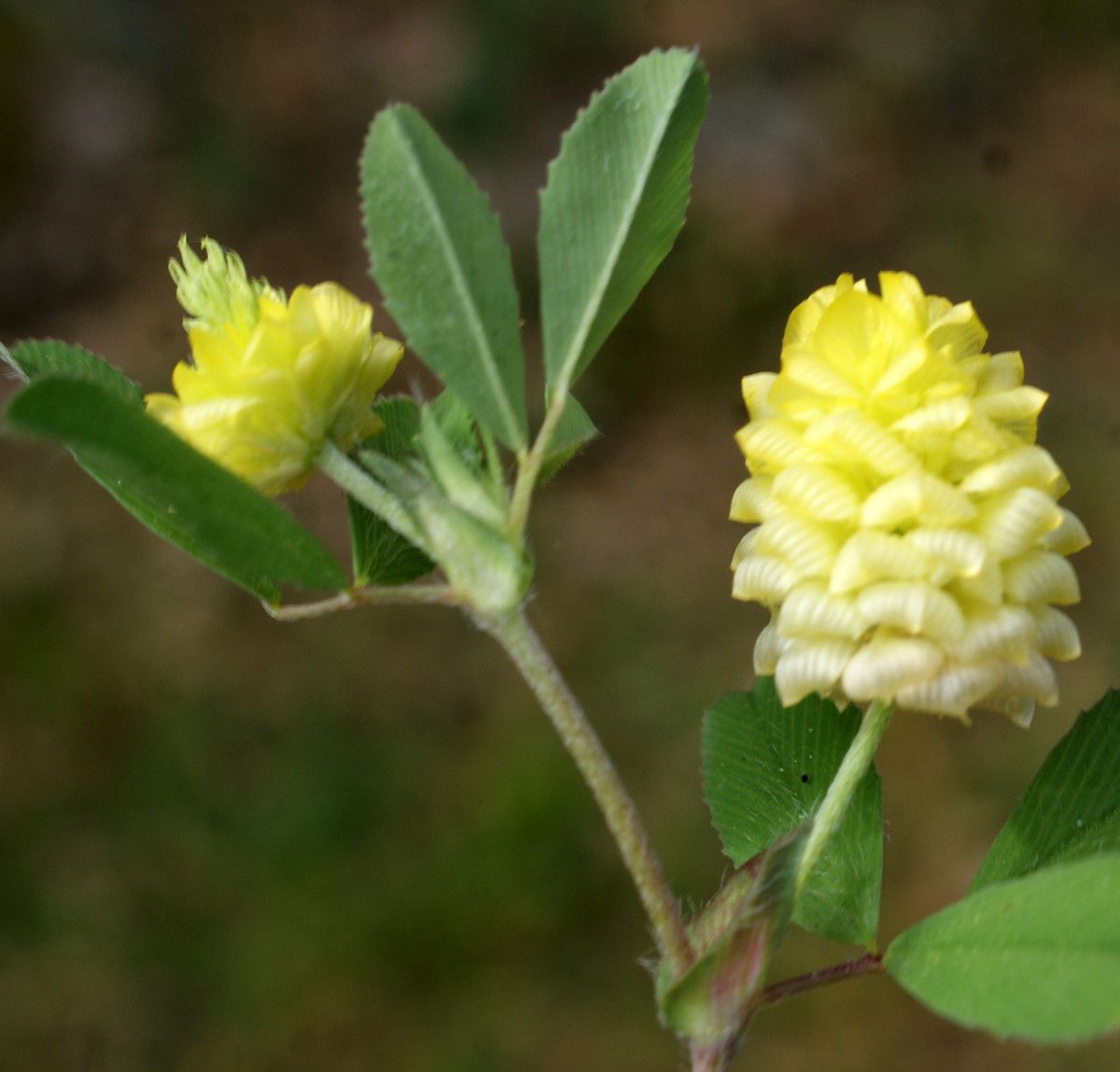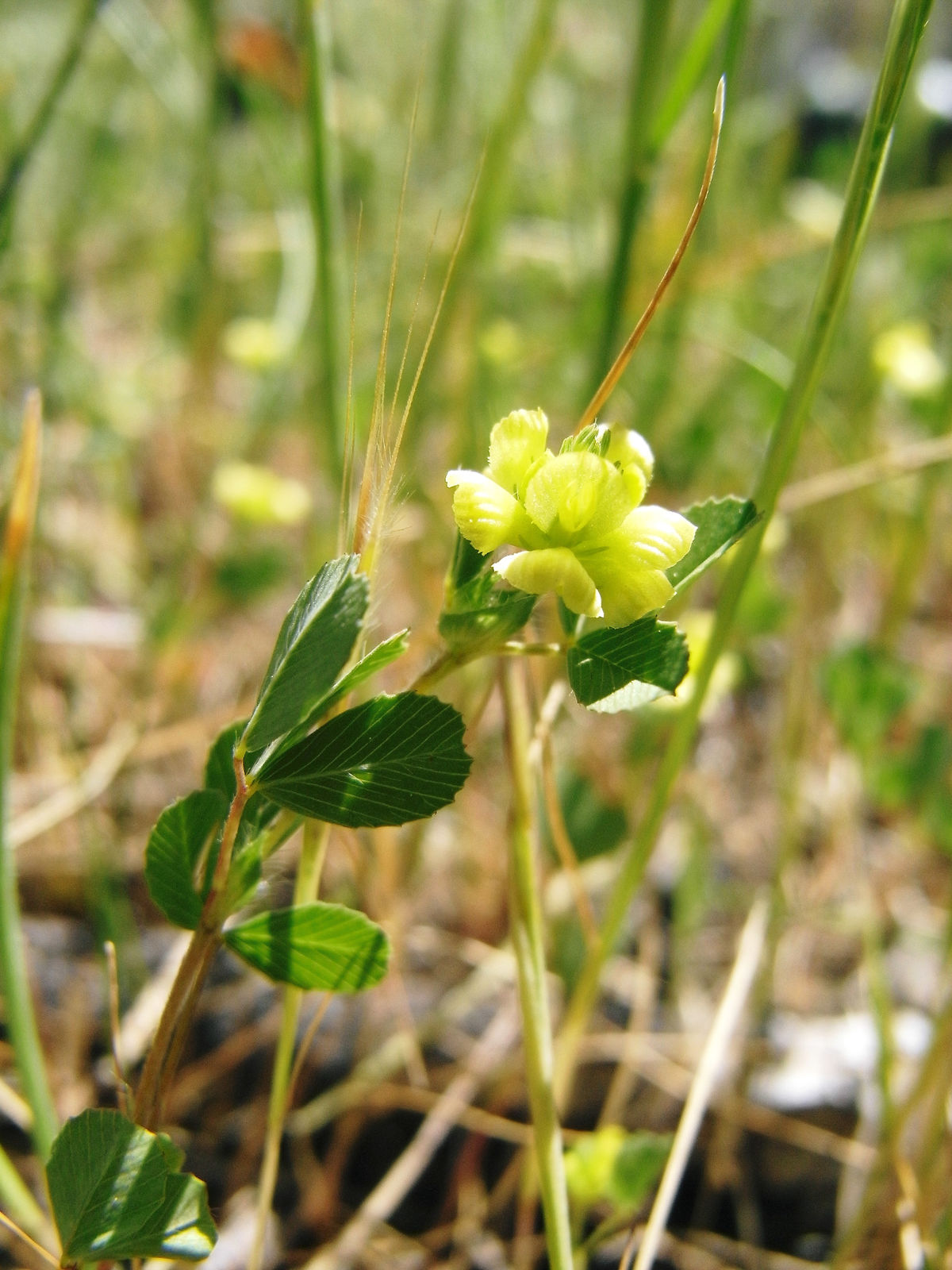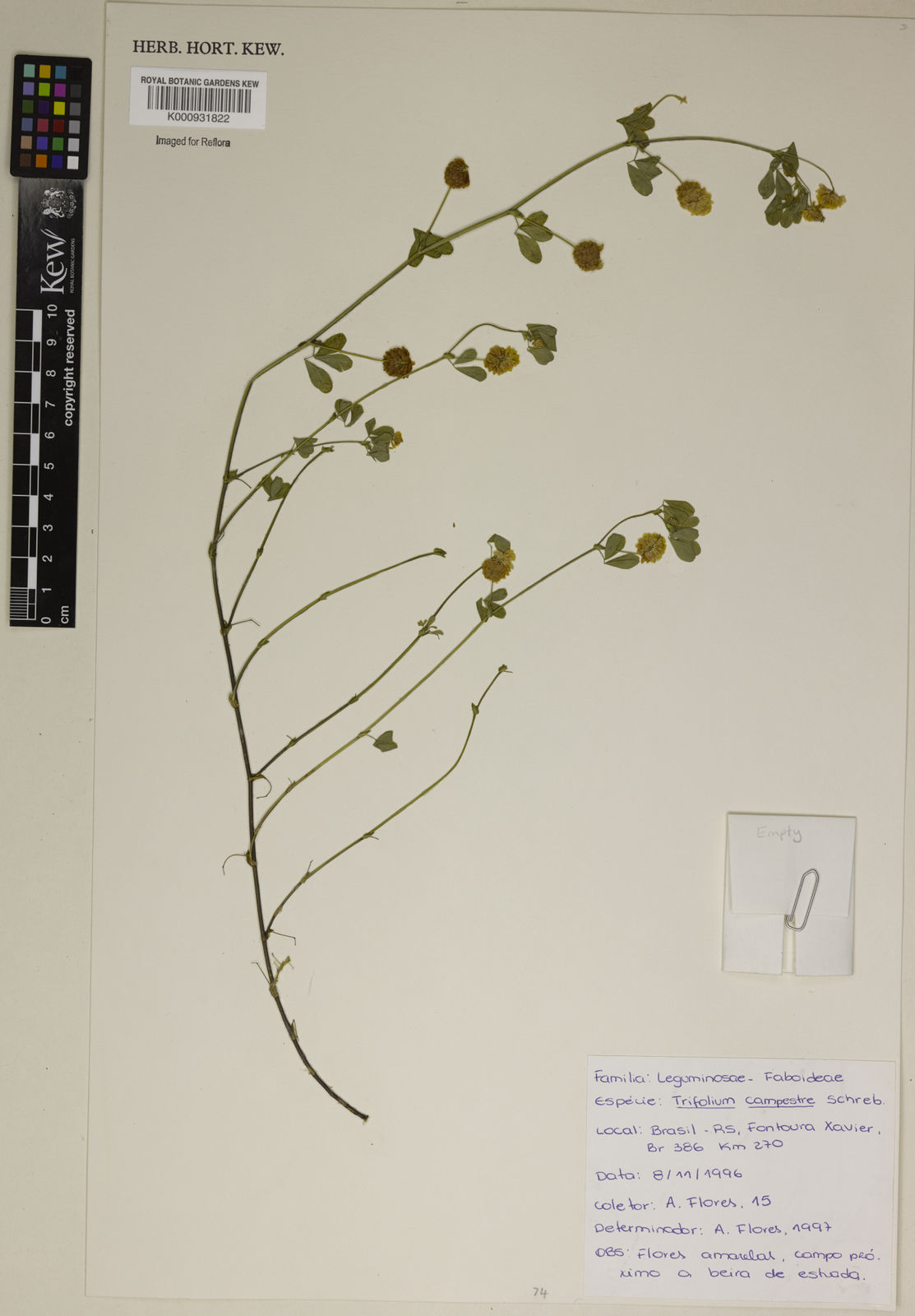Field Clover
trifolium campestre
Also known as: ["Yellow Clover","Low Hop Clover"]
Overview
A small annual or short-lived perennial clover with yellow flowers, native to Europe and naturalized in many regions.
Benefits & Perks
["wildlife attractant (bees, butterflies, birds)","drought tolerant","low maintenance"]
Botanical Classification
| Phylum: | Magnoliophyta |
| Class: | Magnoliopsida |
| Order: | Fabales |
| Family: | Fabaceae |
| Genus: | Trifolium |
| Botanical Name: | Trifolium campestre |
Plant Characteristics
Basic Information
- Category: Flowers
- Suitable Location: open garden beds or meadows
- Suitable For:
- Is Weed: No
- Allergenicity: low
Environmental Needs
- Climate: {"temperatureRange":"5–30°C"}
- Hardiness: {"zones":"4–8"}
- Misting: rarely required
- Drainage: Fast-draining to prevent root rot.
- Soil Type: Well-draining, loamy soil with added organic matter; tolerates poor soils.
Maintenance Level
- Maintenance Level: very low
- Toughness Level: high
- Pruning Frequency: As needed, typically after flowering or in early spring.
- Pruning Intensity: Light to moderate; avoid heavy pruning unless necessary to control size or shape.
Care Details
Ideal Sunlight Coverage:
Full sun (6–8 hours of direct sunlight daily); tolerates partial shade but may produce fewer flowers.
Sunlight Tolerance Tips:
Acclimate plants gradually to intense sunlight; protect from harsh afternoon sun in hot climates; ensure adequate airflow to prevent fungal issues.
Care Requirements
Care Difficulty
very easyeasy
Sunlight
full sun
Rotate plants for even light exposure; use shade cloth in extreme heat; avoid placing in drafty areas.
Watering
every 7–10 days during active growth, reduce in winter
Water thoroughly but infrequently to encourage deep roots; avoid waterlogging; ensure soil dries slightly between waterings.
Soil
well-drained, loamy soil
pH: Slightly acidic to neutral (pH 6.0–7.0).
Avoid heavy clay soils; amend with grit if drainage is poor; test pH periodically.
Temperature
Prefers cool to moderate temperatures (60–75°F or 15–24°C); tolerates frost but may struggle in prolonged heat.
Monitor temperature fluctuations; adjust watering and light as needed; protect from sudden cold snaps.
Fertilizing
every 4–6 weeks during spring and summer
Apply fertilizer to moist soil to prevent root burn; flush soil occasionally to prevent salt buildup; reduce feeding in dormancy.
Propagation
Methods
Seed propagation is most common; stem cuttings can also be used for some varieties.
Step-by-Step Propagation Guide
- Prepare medium.
- Sow seeds or take cuttings.
- Maintain moisture and warmth.
- Transplant once rooted.
Best Time: Spring or early summer when the plant is actively growing.
Environment
Warm (65–75°F or 18–24°C), humid, and bright indirect light; protect from direct sun.
Medium
Well-draining seed starting mix or a mix of peat and perlite for cuttings.
Hormone
Not typically required for seeds; rooting hormone can aid cuttings.
Timeline
Seeds germinate in 1–3 weeks; cuttings root in 2–4 weeks and establish in 1–2 months.
Tools Needed
Seed trays, pots, rooting hormone (optional), misting spray bottle, labels.
Quick Tips
Keep soil consistently moist but not waterlogged; provide gentle bottom heat for faster germination; thin seedlings as needed.
Pruning & Repotting
Pruning Guide
Method
Snip off spent flowers to encourage reblooming; trim leggy stems to promote bushier growth.
Pruning Plan
Minimal pruning needed; focus on removing dead or damaged growth to maintain vigor and appearance.
Tools
Clean, sharp scissors or pruning shears.
Checklist
Sterilize tools; prune dead or diseased parts; remove spent flowers; shape as desired.
Repotting Guide
Best Season
Early spring before new growth begins.
Pot Size
One size larger pot (e.g., +2 inches in diameter); ensure good drainage.
Method
Remove plant gently; trim any circling roots; place in a slightly larger pot with fresh soil; water thoroughly.
Suggestions
Repot only when the plant becomes root-bound or outgrows its container; typically every 2–3 years.
Checklist
Choose appropriate pot size; prepare fresh soil mix; handle roots carefully; water after repotting.
Advanced Care Tips
Watering Mastery
Watering Checklist
Check soil moisture before watering; water deeply; ensure drainage; avoid overhead watering.
How to Apply Water Properly
Water at the base of the plant, ensuring moisture reaches the root zone; water early in the morning to minimize evaporation; allow excess water to drain away.
Watering Schedule Tips
Water deeply once a week during active growth, reducing frequency in winter or drought; adjust based on rainfall and soil moisture.
Soil Improvement
Add compost or aged manure for fertility; mix in perlite or sand for drainage; ensure aeration with organic matter.
Temperature Stress Management
Signs of Temperature Issues
Wilting, yellowing leaves, stunted growth, or flower drop in extreme heat; browning or necrosis in cold stress.
Cold Stress
Low temperatures slow growth and may cause leaf damage or dieback, especially in wet soil.
Solution: Provide mulch for insulation; avoid overwatering; move potted plants to a sheltered location during freezes.
Hot Stress
Excessive heat can lead to wilting, leaf scorch, and reduced flowering; may go dormant in extreme conditions.
Solution: Provide afternoon shade; increase watering frequency; use mulch to retain soil moisture.
Fertilizing Guide
Fertilizing Checklist
Use diluted fertilizer; apply during growing season; avoid over-fertilization; flush soil periodically.
Fertilizing Method
Use a balanced, water-soluble fertilizer diluted to half strength every 4–6 weeks during active growth; avoid fertilizing in winter.
Common Problems & Solutions
Toxicity Warning
Cats
Non-toxicTrifolium campestre is not toxic to cats. It is generally safe for feline consumption in small quantities.
🌿 Toxic Parts:
⚡ Toxic If:
if eaten
Dogs
Non-toxicField clover is not considered toxic to dogs. It is commonly found in pastures and is often consumed by grazing animals without adverse effects.
🌿 Toxic Parts:
⚡ Toxic If:
if eaten
Humans
Non-toxicTrifolium campestre, commonly known as field clover, is generally considered non-toxic to humans. However, ingestion in large quantities may cause mild gastrointestinal discomfort due to its high fiber content.
⚠️ Symptoms:
🌿 Toxic Parts:
⚡ Toxic If:
if eaten in large quantities
Frequently Asked Questions
Q: Is Field Clover toxic to pets?
A: No, Field Clover is non-toxic to dogs and cats.
Q: Does Field Clover attract wildlife?
A: Yes, it attracts bees, butterflies, and birds.
Q: How easy is it to grow Field Clover?
A: It is very easy to grow, requiring minimal maintenance.
Quick Reference
| Family: | Fabaceae |
| Care: | very easy |
| Light: | full sun |
| Water: | every 7–10 days during activ |
Get Expert Care Tips
Download the Plantious app for personalized care reminders and plant identification!
Google Play App Store








